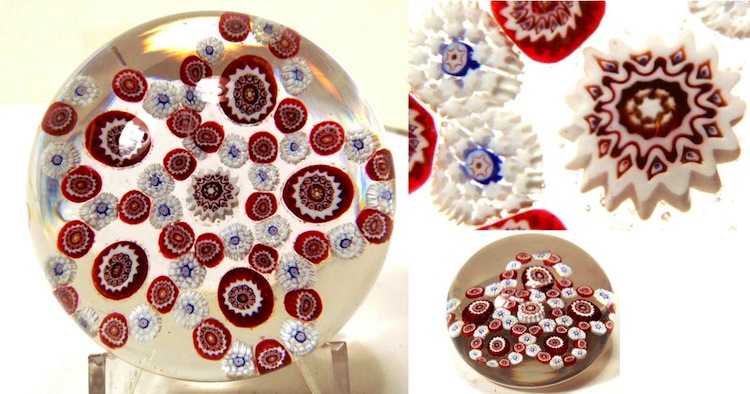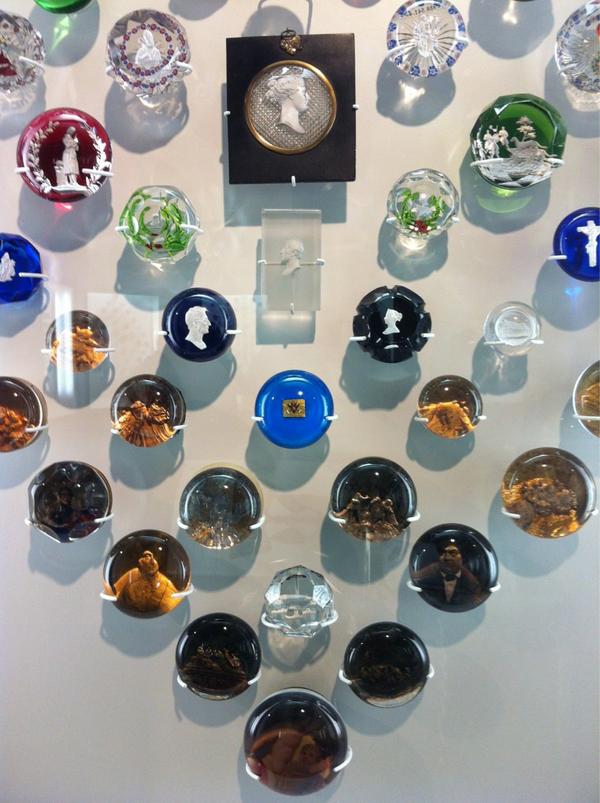The most sought-after paperweights were made by famous French factories such as Baccarat, Clichy and St Louis during the mid-19th century. Patterns were built up from tiny slices of differently coloured rods, set in a mould and covered in clear glass.
Millefiori
Millefiori (from the Italian for a thousand flowers) paperweights are so called because their canes resemble a carpet of flowers.
You can often identify the maker of a paperweight by the type of rods it contains and the way they are arranged. The one pictured above includes silhouettes of a dog, a horse and a deer, which are typical of the Baccarat factory. It’s worth about £6,500 to £7,000.
Beware
Reproductions of antique paperweights abound. The easiest way to tell them apart from the real thing is to feel the weight – reproductions are significantly lighter.
Identifying marks
Baccarat paperweights often include signed and dated canes – this one is marked B 1848. St Louis and Clichy paperweights are sometimes marked with initials.
St Louis
Large single flower heads were much used by the St Louis factory. Sometimes flowers were laid on a criss-cross lattice, known as latticinio. This weight would cost £500 to £600.
Clichy
Clichy weights can often be identified by the characteristic rose they contain. This one would be worth over £2,000 but more common types fetch from £400.
Overlay weights
Some rare weights, such as this one by Baccarat, contain a layer of opaque glass through which windows are cut to reveal the design beneath. This one would be worth £3,000 or more.























